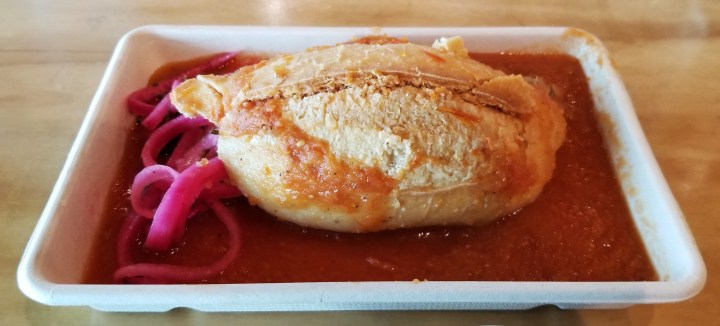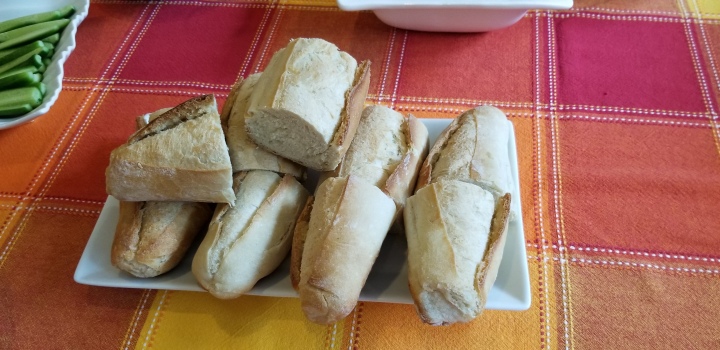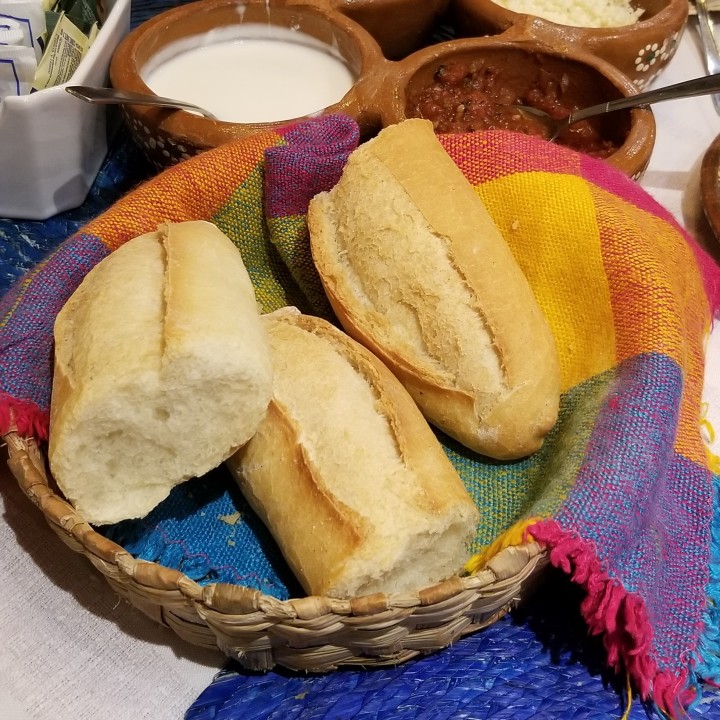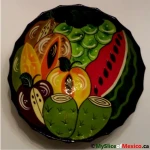
Even though wheat did not exist in Mexico before its introduction from Spain in 1534, many different varieties of bread have been created in the country over the centuries, becoming traditional at the Mexican table. Most of the Spanish clergy and government figures in the colonies considered Mexico’s native corn as an act of the devil, and actively pursued its substitution with wheat in religious offerings and public functions, also wanting to have the bread they were used to consume in Europe, on their own tables.
Once wheat crops and mills were established in Mexico, bread was prepared following Spanish recipes, but in many cases, regional availability of ingredients and climatic conditions transformed that bread into new local specialties. This is the case of birotes, crusty buns with no flavourings or aromatics (other than salt in some cases), but with a unique chewy crumb, which are said to be possible to bake exclusively in the Mexican state of Jalisco and, even more specifically, the region around its capital city, Guadalajara. This is often attributed to its humid subtropical climate and high altitude of 1,566 m (5,138 ft.) above sea level, creating one-of-a-kind fermentation conditions. It must have a certain amount of truth, because I had never seen or tasted birotes before my recent visit to Guadalajara, but I had plenty of opportunities to try this seemingly omnipresent local mainstay:




They are eaten with other dishes at the table, or used as a sandwich bun, filled with sweet or savoury preparations, the most famous being “la torta ahogada” – “The Drowned Mexican Sandwich” (pictured at the top of this post) which is nothing more than a birote filled with pork meat, and then smothered with an often spicy tomato-based sauce (hence the name.)
As I read later on, the original birote was prepared with a fermented dough starter, greatly dependent on local climate, which explains the impossibility of duplication (much like the legendary San Francisco sour dough bread.) However, nowadays, most bakeries in Guadalajara take advantage of dry yeast, mimicking the sour dough process by preparing a first batch of dough and letting it sit to sour, but with the difference from traditional methods that this dough has yeast in it; this shortens fermentation times for this “mother dough” from days, to just a few hours. The mother dough is then added to a batch of fresh dough, which is also different from regular sour dough bread recipes, because it contains dry yeast, as well. This technique provides a faster, more reliable and reproducible result, hence much less dependent on local climatic conditions.
After learning that, making a batch of birotes at home did not sound like an impossible task, but rather more like an irresistible challenge, which I, of course, had to take! In my next post, I will share the results of my experience, following the “secret” recipe, step by step (“If it ain’t broke, don’t fix it”.)
And speaking of challenges, the inspiration for this post was Teresa’s Music Monday #1: “Your challenge is to take a song title and use it as inspiration to tell a story, poem, or whatever you like.”
The song I chose was “Guadalajara” written by Mexican composer Pepe Guizar in 1937 as a homage to his birthplace, traditionally performed by a mariachi band. Click here for a YouTube video of the song interpreted, mariachi band and all, in the movie “Fun in Acapulco” (1963) by no other than Elvis Presley!








I enjoyed your Elvis Presley song.
LikeLike
Thank you, Jim, I found it very amusing as well!
LikeLike
Your tortas ahogada brought to mind a silly joke they used to tell us gringos in school:
Juan y Pegame fueran al mar. Juan ahogo. Quien quedó?
We learned not to fall for that one more than once!!
LikeLike
Ha ha ha, ouch! They had a joke like that on the TV show Monk: ” Pete and Repeat were on a boat; Pete fell off, who’s left?”
A little girl tells that to Monk and because he has OCD he can’t stop answering 😂
LikeLiked by 1 person
A slightly less painful version, for sure!
LikeLiked by 1 person
I love bread… too much at times and having lived in Spain for 17 years has access to a great many artisan breads which were delicious. I still cannot eat plastic wrapped sliced loaves and we eat fresh sourdough from good bakers. Thanks for an informative post Irene.
LikeLike
I know how it is, Sally; Mexican bakeries are so good, too! I never even thought of making bread at home until I didn’t have access to them. I will be posting the recipe for these buns next; close to artisan baguettes, but unique as well.
LikeLiked by 1 person
Fantastic Irene.. If you think about it please leave a link on my about page and then I can share..
LikeLike
Thank you, Sally, will do!
LikeLiked by 1 person
Recipe?!
LikeLike
Check the next post, Mia!
LikeLike
I found the recipe…thanks so much!
LikeLiked by 1 person
Awesome!
LikeLike